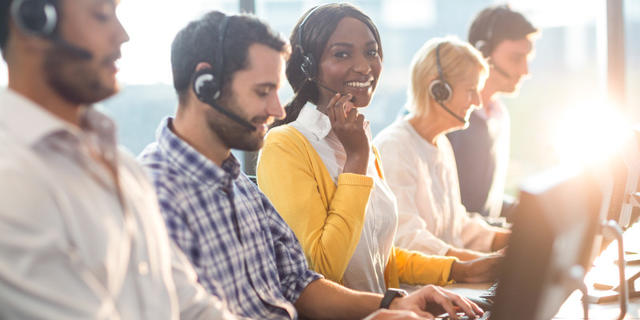With the launch of Pega Infinity™ ’23, Pega wants to empower clients to take the next leap in customer engagement. The transition from human-generated, marketing-driven content to a self-learning, self-optimizing AI that constantly simulates and evolves behind the scenes can provide exceptional customer experience across all channels. This transition is something that we call autonomous engagement.
Autonomous engagement is when organizations trust artificial intelligence (AI) to interact independently with customers across the enterprise and learn from those interactions to the point where AI is not just making tactical engagement decisions but is recommending and shaping a company’s strategies. At its core, autonomous engagement is about organizational change, trust, and transparency. This journey consists of four stages, with organizations across the enterprise enabled at varying levels: the Human Stage, the Automation Stage, the Self-Learning Stage, and the Self-Optimizing Stage.

In Pega Infinity ’23, Pega Customer Decision Hub™ can help accelerate personalized content creation and cost reduction while streamlining processes with faster go-to-market strategies. Let’s take a closer look at some of the key features from this launch and how they map back to autonomous engagement and the four stages of the continuum.
Human Stage
At the beginning of the autonomous engagement continuum is the Human Stage. This foundational stage relies on human labor as the primary driver of content, creativity, tactics, and strategy. It is becoming increasingly difficult for human labor to account for the high volume, variety, and velocity of modern customer engagement. That is where the following features come into play:
- Intelligent Treatments: This feature uses generative AI to create and refine the next best action treatments. With diverse tones and perspectives, the AI ensures empathy and analyzes performance to recommend high-value treatments to its users.
- One-Time Actions: As the name suggests, these are highly targeted and time-sensitive messages. As a result, marketers can swiftly deploy actions to specific audiences by using predefined use cases. Users can conveniently manage the schedule and monitor performance through 1:1 Operations Manager.
Automated Stage
Organizations enable greater scale and efficiency in the Automated Stage by operationalizing data and automating human-engineered initiatives. Marketing automation allows brands to create business rules and triggers to engage with segments of consumers that share attributes. While this automation increases speed, scope, and efficiency, it also lacks empathy. Most marketing automation tools are static and cannot pivot when a customer’s journey or needs change. Our latest features help brands get to know their customers better and understand their context:
- Persona Management: This feature helps users create specific customer personas that are important to their brands, and then test and validate their persona-based strategies before deploying to production. You can build customer personas from scratch by using an existing customer or applying assistance from generative AI.
- Enhanced Data Protection: With this feature, clients can encrypt and safeguard customer-sensitive data from unauthorized access. By using Bring-Your-Own-Key (BYOK), clients maintain full control of their data while retaining critical business functionality. This protection builds on existing identity management services while making it easy to comply with internal and external data and privacy laws, mitigate risks, and seamlessly adopt Pega Cloud.
Self-Learning Stage
The Self-Learning Stage is when machine learning becomes the driving force, working to predict what the customer wants and needs. To provide a great customer experience, the AI at this stage must be capable of constantly learning, adapting, and — most importantly — converting data and signals into insights. The following features and tools apply during this stage:
- Conversion Modelling: AI uses this feature to consider customer engagement and conversions for determining next best actions. Users can run both these models at a product or Channel level and determine their most optimal approach to drive the next best actions.
- Customer Profile Viewer: This tool provides clients with enhanced transparency and explainability of next-best-action decisions, thanks to a comprehensive view of customer behavior across Channels and detailed insights into each next-best-action decision. With new enhancements, you can apply and test a persona and channel context, and brands can use generative AI to explain next-best-action calculations.
Self-Optimizing Stage
In the final Self-Optimizing Stage, AI takes a more strategic role by constantly simulating outcomes to optimize strategy, with guardrails to safeguard stakeholders. It is all about creating a centralized, single executive control center. Instead of focusing on optimizing an individual campaign or an interaction — which is powerful but still very tactical — AI goes to work optimizing the entire strategy, finding the best ways to increase customer lifetime value with the following tools and features:
- Feature Finder: This tool assists data scientists in identifying optimal predictors for their adaptive models. It automatically scans customer data, evaluates the performance of each predictor within a model, and generates a report that ranks all the best predictors for every model. Users can then add the best predictors to the model with a single click.
- Automated Recommendations: This powerful new feature helps brands engage more empathically by identifying customers who do not receive any actions or receive only irrelevant actions. It then provides insights and suggestions on how to rectify the situation. By analyzing next-best-action performance, it can generate actionable recommendations.
Ready to Embrace AI and Supercharge Your Customer Engagements?
Pega Infinity ‘23 is now generally available. Keep visiting the Community Hub for the latest information on new training, events, support, and other resources.
Read the full Pega Infinity ‘23 press release here and learn about Customer Decision Hub.
Related Resources
Don't Forget
- JOIN THE CONVERSATION on Support Center
- FOLLOW @PegaDeveloper on Twitter

